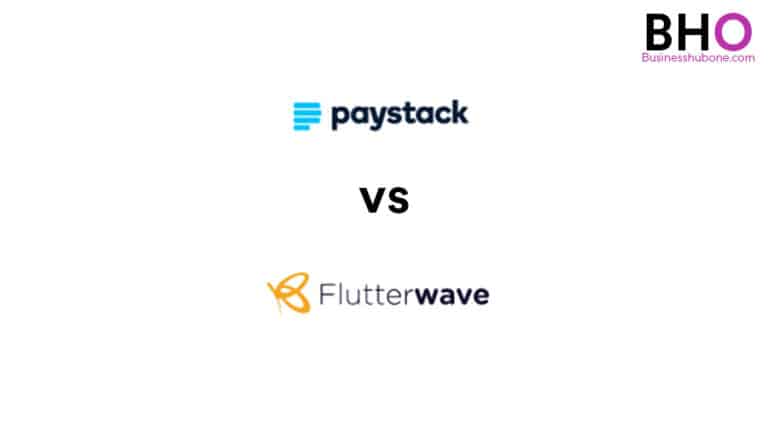The quiet revolution- How stealth start-ups are changing the game.
- What are stealth start-ups?
- Types of stealth start-ups
- Examples of stealth start-ups in the world and in Nigeria
- Why a founder might want to consider that approach
- Stealth and its correlation with the industry
- Advantages and disadvantages of stealth start-ups.
- How to succeed with a stealth start up/ Guidelines for a successful stealth start up.

Table of Contents
Introduction
There are so many established companies/start-ups we know that may have employed the concept of stealth at some point in their growth; hence, in this article I am going to discuss what stealth start-ups are, types, examples, benefits and risks, emerging trends with stealth at its centre in industry, tips for managing secrecy and when to unveil your product or emerge.
What are stealth start-ups?
Stealth start-ups are companies that operate in secrecy, keeping their product development process, services, technology and business model under wraps until they are ready for a public launch.
These businesses typically avoid media coverage, public scrutiny, sometimes attention from investors too and launch quietly in order to give producers ample time to refine their ideas, develop a viable product and take advantage of early traction without scrutiny before competition sets in.
Therefore, since stealth mode start-ups and regular start-ups are not the same, you may want to think about forming a stealth mode company instead of a regular start up if you have a wonderful idea for a firm. Here are some of the key characteristics of stealth start-ups.

Characteristics of stealth start-ups
- Generally no PR or marketing to create public awareness (until they’re ready)
- Develop products/services privately via beta testing
- Closed beta launch (pre-product launch) in order to build initial user base.
- Strict NDAs/ confidentiality contracts with employees and sometimes investors.
- Generic company descriptions on job posts and LinkedIn profiles, etc.
- Uses the word “stealth start up” and a brief description of the company’s solution statements before launch. I.e. Instead of a website, the company’s profile offers a Wikipedia-style entry for “stealth start up.” Almost no information about the company or even the industry it operates in is provided in the post. It simply mentions the product they intend to develop in passing e.g. “a revolutionary AI based healthcare product.”
Types of stealth mode
As we have discussed, if you have an idea you want to build a business around, you should launch under a temporary state of secrecy before emerging into the spotlight.
Basically, there are two types of stealth mode:
- Total stealth mode
- In-company stealth mode
Total stealth mode
Total stealth mode is when a new company tries to keep all its operations as secret as possible in which case, they may mislead the public about its true goals if there is any publicity already. It may maintain a generic website that does not disclose its specific field of business, personnel and/or its location. When considering starting a business with this mode of stealth start up, this is the one you would operate under.
In-company stealth mode
In-company stealth mode is when an already existing business tries to keep a new product or idea as secret as possible until it’s time for a release. This secrecy however extends beyond just the public eye. Many times, this form of stealth mode keeps internal and external stakeholders out of the loop.
This often prevents premature dismissal of a concept or idea until it has reached the appropriate authorities. A great example of this is Microsoft; code names were used to describe new updates, products or services before they launched, e.g. whistler for windows XP, Threshold and later -Redstone for windows 10, sun valley for windows 11 and Hudson valley for windows 12 (a possible- planned version of windows expected to be released this year, 2024)
Examples of stealth start-ups
There are several examples of companies that started in stealth mode and later achieved success. These examples include:
Google:

- Stealth Period: In 1998, while still enrolled as graduate students at Stanford University, Larry Page and Sergey Brin created Google. When Google first started out, it functioned covertly, developing and improving its search engine technology while keeping its algorithms under wraps.
- Achievements During the Stealth Period: Google concentrated on refining its search technology, experimenting with various algorithms and strategies for indexing web pages while in stealth mode. Their research and development endeavours were facilitated by the early investments they obtained from investors like Andy Bechtolsheim.
- Effect on Trajectory: By choosing to run in stealth mode, Google was able to keep a competitive edge over rival search engines like Yahoo and AltaVista. When Google was prepared to launch its search engine in 1999, it had already established itself as a strong & formidable player in the industry. Due to this early success, Google was able to grow quickly expanding into new markets like advertising, cloud computing, storage, video conferencing and artificial intelligence; solidifying its place among the most valued and influential companies in the whole world.
Dropbox:

- Stealth Period: Dropbox was founded by Drew Houston and Arash Ferdowsi in 2007. Dropbox worked in secret for a while, refining its file sharing and cloud storage technology in the background.
- Achievements During Stealth Mode: During the period of stealth, Dropbox concentrated on developing and perfecting its file-syncing technology. To gather input and enhance the product, the company conducted beta tests with a limited number of users. They also secured early investments from notable venture capital firms like Sequoia Capital and Accel Partners.
- Impact on Trajectory: By choosing to go stealth, Dropbox was able to perfect their product and build a devoted customer base prior to going public. When Dropbox eventually opened up to the general public in 2008, it quickly gained traction and millions of customers were drawn to the service very fast. This propelled it to rise to the top of the global cloud storage provider rankings. With millions of customers globally, Dropbox now offers a wider range of products, including document editing, workflow automation, and collaboration capabilities.
Siri:

- Stealth period: Siri was founded in December, 2007 by Tom Gruber, Adam Cheyer, and Dag Kittlaus. In its early stages of development, Siri operated covertly, developing and honing its virtual assistant technology driven by artificial intelligence.
- Accomplishments during the stealth Phase: The Siri team employed stealth mode to concentrate on developing and refining its virtual assistant technology, which made use of machine learning and natural language processing to comprehend and reply to user inquiries. They carried out a great deal of research and development to make sure Siri could correctly understand user requests and respond with pertinent and useful information. Furthermore, venture capital firms made large investments in Siri, including a 2008 Series A round led by Menlo Ventures and Morgenthaler Ventures, which supplied the the money they needed to keep up their development work.
- Effect on trajectory: By choosing to function in covert mode, Siri was able to improve their technology and create excitement in the tech community. When Siri eventually released its iPhone virtual assistant software in February 2010, it caused a lot of buzz and media coverage.
The introduction of Siri signalled a major turning point in the advancement of voice recognition and artificial intelligence, demonstrating the potential of virtual assistants to completely change the way users interact with their electronics. Due to its user-friendly and conversational design, Siri became one of the most well-known virtual assistants worldwide very fast among iPhone owners.
After acquiring Siri Inc. in 2010, Apple included Siri’s technology into its iOS operating system. Siri now powers voice commands and intelligent features on a variety of Apple products, such as iPhones, iPads, Macs, and Home Pods. She is an essential component of the company’s ecosystem.
Ultimately, Siri’s rise from a stealth start up business to a popular brand serves as a testament to the strength of creativity and the transformative potential of disruptive technology. Siri was able to create buzz, attract funding, and eventually position itself as a major force in the artificial intelligence and virtual assistant space by going undercover and launching at the right time.
“… if you have a technology that takes some time to get right, being stealthy enables you to have a buzz when you emerge and the head-start you need to compete with anyone.” _Adam Cheyer.
Other examples of companies that operated in stealth mode includes:
- Magic Leap:
 Raised billions in funding while operating in stealth mode to develop its augmented reality technology.
Raised billions in funding while operating in stealth mode to develop its augmented reality technology.
- Currently in 2024, this year, an article released by fortune.com on the 15th of February 2024, featured a Start up emerging from stealth with $25 million for robots that lay bricks as fast as humans—and fill the huge shortage of laborers. The name of their company is Monumental.
Stealth and Correlation with the Industry:
- Common in Tech: Stealth mode is prevalent in the tech industry, where disruptive innovations are often kept confidential to prevent imitation.
- Growing Trend: With the rise of competitive markets (successful start-ups in Nigeria for example) and the pressure to innovate, more start-ups are opting for stealth mode to gain a strategic edge.
Why a founder might consider this approach (advantages)
There are several strategic reasons highly secretive stealth tactics make sense for some companies:
- Protects intellectual property and deters the concept of idea theft: A stealth mode company keeps rivals from learning about it and imitating or outpacing businesses to market. It permits creativity and innovation hidden from prying eyes. This is one of the major reasons stealth mode is preferred for start-ups with novel ideas that can be claimed by huge companies with the personnel and resources to implement the idea within a shorter period of time. Some start-ups can operate in this way for many years even up to a decade in order to perfect their flagship product before bringing it to the market.
- To Maintain Competitive Advantage: Operating in stealth mode allows founders to develop their product or service without tipping off potential competitors.
- Manage messaging/publicity: Start-ups control their narrative on their terms, not the media’s, by remaining under wraps from the start. They make the final decisions on the timing and format of their public debut. Stealth start-ups have the opportunity to strategically reveal their innovation when they’re ready, shaping the narrative and generating buzz.
- Improve a product in peace: Founders can make iterations to products based on honest user feedback rather than outside opinions when they are not under public scrutiny. By keeping a low profile, founders can focus on refining their offering without the pressure of public expectations or investor demands.
- Establish traction before promoting: Before spending money on expansion and public relations, a stealthy user base should be built to show market demand.
- Buy time to scale: By delaying awareness, firms have more time to hire the right people and set up procedures, guidelines, and operations before they are thrown into the spotlight.
- Build suspense: Coming out of hiding creates excitement, FOMO, and attention right away. The revelation turns into a happening. This can in turn be used as a marketing advantage to reach the company’s target audience.
- Benefits of fundraising: Venture Capitals prefer quiet firms that show focus on execution and discipline over marketing.
When used strategically, operating in stealth mode gives early-stage start-ups more focus than hype, putting more value on the quality of the product rather than just publicity.
Disadvantages of stealth start-ups
While the allure of secrecy and mystery may cloak stealth start-ups in an aura of intrigue and suspense, beneath the surface of this concept lies a topography fraught with challenges and potential pitfalls. Indeed, for all their perceived advantages, stealth start-ups are not without their share of disadvantages and they include:
- Limited Feedback: Lack of external feedback can result in blind spots or overlooked market needs. Without the benefit of early user feedback and testing, these start-ups run the risk of or may find themselves investing time and resources into a product that may not appeal to their target audience. And in a business environment where competition exists, feasibility and adaptability are very key and a lack of this can be a fatal flaw, leading to the collapse of the business.
- Risk of Isolation: Operating in secrecy can lead to missed networking opportunities and partnerships. This is a major drawback because by doing this, stealth start-ups risk alienating themselves from the broader entrepreneurial community. Without the benefit of public visibility, they may find themselves shut out from valuable networking opportunities, mentorship programs, and potential partnerships. In a world like ours, where success often hinges on who you know (connections) as much as what you know, this isolation can be a significant deterrent to growth and success.
- Failure to attract top talent: The veil of secrecy that envelops stealth start-ups may work against them in luring elite talent. Since talent is the lifeblood of innovation in this business, stealth firms may find it difficult to attract top people if they are unable to publicly display their work and vision. Attracting and keeping great talent can become a losing battle if there is no tangible success or the prospect of public recognition. Apart from that many top talents will not sign up for a job they know little about. Signing NDA forms and swearing secrecy can be a lot for many individuals to handle, especially because of repercussions that may come from violating their NDA as well as inability to showcase their work in this stealth start-up to others.
- Potential Investor Concerns: Investors may be hesitant to invest in start-ups with limited visibility and proof of concept.
- Internal dysfunction: Without the transparency and accountability that comes with public scrutiny, they may find themselves susceptible to internal dysfunction, mismanagement, and ethical lapses. In the absence of external oversight, bad actors within the company might take advantage of the lack of transparency for their own benefit in the absence of external scrutiny, which could tarnish the credibility and reputation of the business..
How to Succeed/Guidelines for a successful stealth start-up.
Success as a stealth start-up demands a calculated approach, cautious preparation, and exacting execution. Here are some crucial tactics to think about:
- Establish Definite Objectives/Goals and Benchmarks: Establish clear goals and benchmarks that support your overarching vision and mission. Whether your team is working on a prototype, getting funding, or attaining a specific user base, having well-defined goals will help keep everyone on track and focused.
- Create a Robust Team: Encircle yourself with gifted people who are as dedicated to success as you are and who share your enthusiasm. Seek out team members with a variety of knowledge and experience, such as backgrounds in business development, marketing, and technology. The difficulties of creating a company while in stealth mode will be easier to handle for a well-coordinated team, experienced and with complimentary strengths.
- Strategic Networking: Engaging with important players behind the scenes is crucial even when working in secret. This comprises professionals in the field, possible collaborators, and consultants who can offer insightful advice. Join relevant online groups, go to networking events, and make the most of your current network to forge connections and develop credibility in your field.
- Construct a Thorough Launch Plan: You should have a plan in place for when you’re ready to go public, even though you’re currently working covertly. Create a thorough launch plan that incorporates outreach, public relations, and marketing initiatives to create interest and buzz about your good or service. For maximum exposure and audience reach, think about utilizing influencer relationships, press releases, and social media.
- Retain Product Focus on Product Development: Being able to concentrate on product development without external inspection is one of the main benefits of working in stealth mode. Make good use of this time by gathering customer input, iterating your product, and improving your offering in response to market need. Give top priority to features that set you apart from the competition and offer your target audience something special.
- Create Alliances and Partnerships: Strategic alliances can be extremely important to a stealth start-up’s success. Determine prospective collaborators who can expedite your expansion via technology integration, distribution channels, or cooperative marketing initiatives. Creating solid partnerships early on can open doors to markets, resources, and experience that might not otherwise be available.
- Stay Nimble and Adaptive: Successful navigation of the dynamic and ever-changing start-up ecosystem demands flexibility and agility. If the market or user feedback dictate that a change in course is necessary, be ready to adjust course. To keep a competitive edge, remain adaptable and sensitive to new trends, rival actions, and changes in consumer preferences.
These tactics will help you succeed as a stealth business if you stick to your objectives and stay motivated. Recall that each entrepreneur starting a firm from the bottom up needs to possess these three qualities: patience, endurance, and resilience.
We have discussed stealth businesses in this article, covering everything from their definition and strategic justification to their benefits and drawbacks. We have examined the rationale for founders’ consideration of this strategy, the relationship between stealth and the sector, and the difficulties they would encounter on the road.
It’s crucial to understand that a stealth start-up’s success is not always assured. While confidentiality can provide businesses a competitive edge and protect them from outside, it can isolate them from valuable resources, top talent and opportunities for growth.
Ultimately, whether operating in stealth mode or not, the key to success lies in vision, hard work, patience and unrelenting commitment to turning dreams into reality.
References
- Wealthiest stealth startup of 2024- fortune.com
- Stealth.com Inc
- Stealth Startup/ LinkedIn
- What is a stealth startup?
- Stealth startup- Marshall Hargrave
- Stealth Mode Start-ups: What Are They And When To Launch One
- –Brands that go stealth- LinkedIn
- Examples of stealth start-ups







